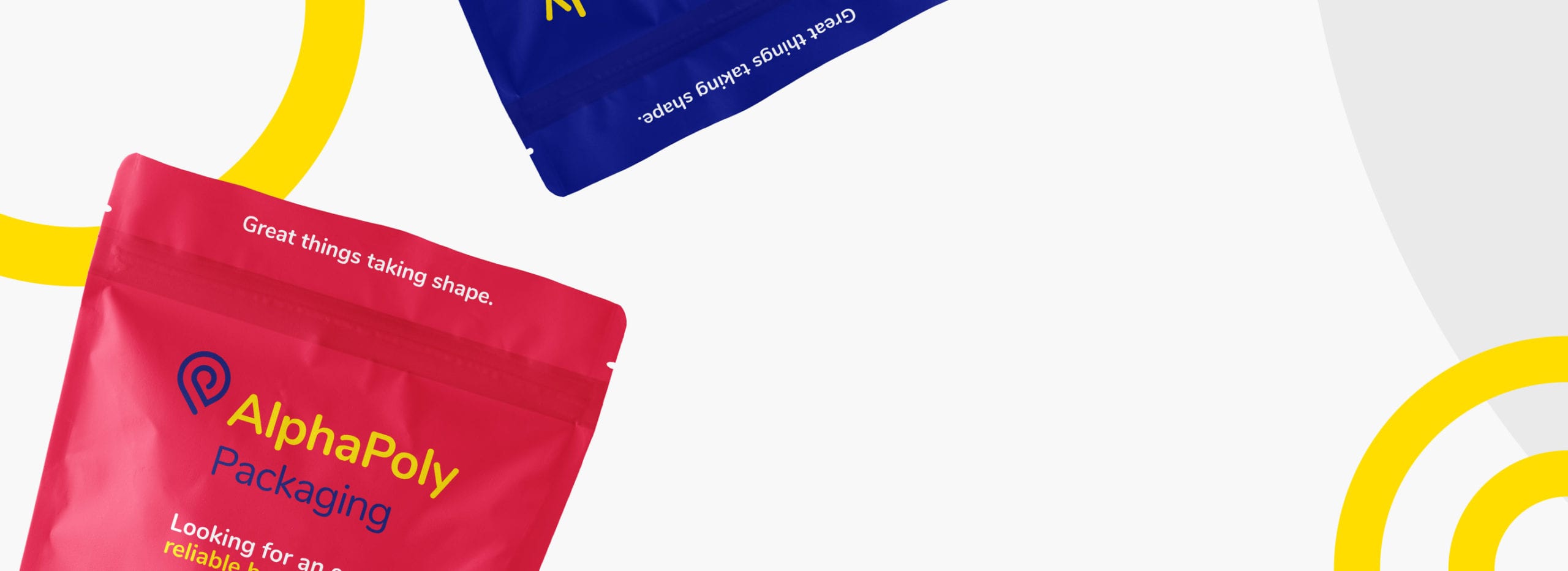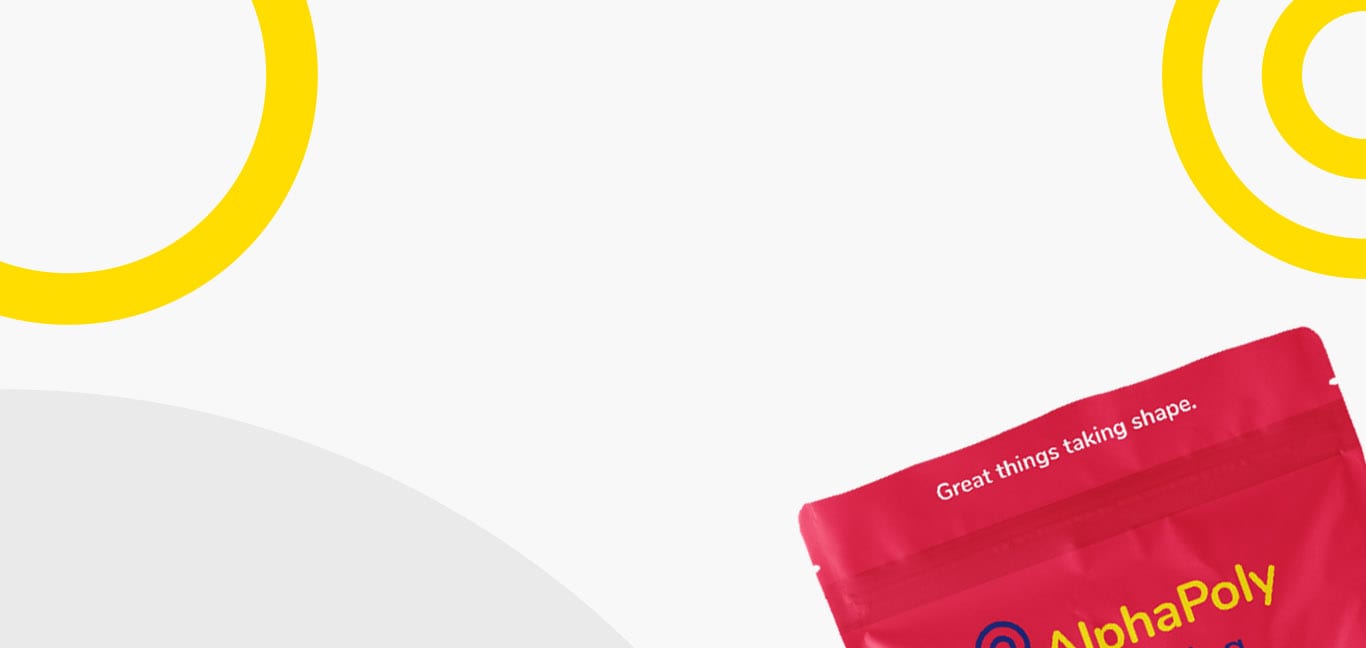
Eco Friendly Packaging, Recyclable Stand Up Pouches
Imagine all your hard work on branding and package design laying crumpled in a landfill, covered in rotting garbage. Disheartening, isn’t it? Not to mention being unfriendly to the planet. But if consumers don’t have the option of recycling your product packaging, that’s exactly what happens.
Consumers don’t want it to be that way.
You don’t want it to be that way.
It doesn’t have to be that way.
AlphaPoly has sustainable packaging options that range from recyclable stand up pouches to eco friendly food packaging and more. Choose packaging that consumers can recycle at retail stores where they collect plastic grocery bags for recycling or that can recycled for curbside pick up. Our SPC (Sustainable Packaging Coalition) endorsed packaging with the How2Recycle Store Drop-Off label can be recycled this way.
Specs
- 100% recyclable
- Meets FDA requirements for food contact
- How2Recycle pre-approved materials
- Reduces waste and carbon footprint
FAQs
Here’s some commonly asked questions about recyclable packaging.
Recyclable packaging refers to packaging materials that can be processed and reused to create new products. It is important because it helps reduce waste, conserve resources, and minimize environmental impact. By using recyclable packaging, we can contribute to a more sustainable and eco-friendly future.
Recyclable packaging helps the environment by reducing waste and conserving resources. It can be broken down and repurposed into new products, reducing the need for raw materials. Recycling packaging also reduces pollution and energy consumption associated with producing new packaging materials.
Recyclable packaging is designed to be collected and transformed into new products, using materials like paper, cardboard, and certain plastics. This process helps conserve natural resources and reduce environmental pollution, but it relies on efficient recycling systems. On the other hand, compostable packaging is made to biodegrade in specific composting conditions, turning into natural elements like water and organic matter. It’s typically made from plant-based materials and can enrich soil, but it requires proper composting environments to break down effectively. While recyclable packaging focuses on reusability and reducing material consumption, compostable packaging aims to return nutrients to the earth and minimize landfill waste. The choice between the two depends on the product needs and the availability of appropriate waste management facilities.
Innovative ideas for designing eco-friendly and sustainable packaging solutions include designing for minimalism and using materials efficiently, such as using lightweight, recycled, or upcycled materials, which can cut down on waste and energy consumption. Additionally, incorporating eco-friendly inks can further reduce the environmental impact of packaging production.
Eco-friendly packaging is often looked at through the lens of long-term benefits. Environmentally, it reduces waste and carbon footprint, aligning with growing consumer demand for sustainable products. This shift can enhance a brand’s image and appeal to eco-conscious customers, potentially boosting sales and loyalty. Additionally, as regulations around sustainability tighten, adopting eco-friendly packaging can position your brand as ahead of the curve with a “first-mover” advantage. Over time, the investment in sustainable packaging may lead to cost savings through reduced waste. The overall return on investment can make eco-friendly packaging a worthwhile choice for businesses.




